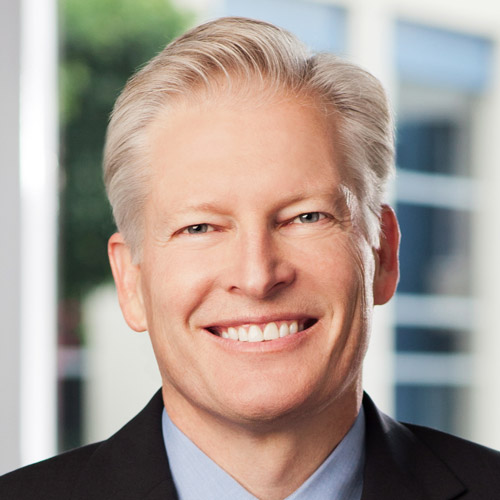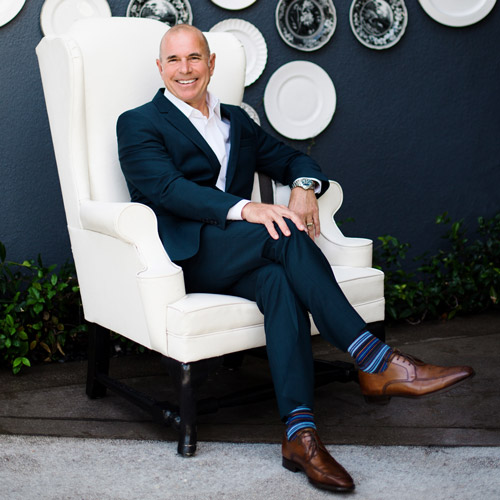
Verizon Communications consumes ten million megawatt hours of electricity and nearly three billion gallons of water across 2,700 buildings every year. Courtney Mezinis, executive director of national portfolio strategy, keeps those numbers in mind with a vision to optimize and reduce across the organization.
Until June 2017, the corporate and retail sides of the organization were handled separately with regards to real estate and facilities. With Mezinis in one consolidated role that oversees both aspects, her office has a unique capacity to advance the company’s environmental stewardship and stay flexible as technology and needs evolve. Their real-estate-as-service model develops flexible, reconfigurable facilities that serve customers’ needs and corporate environmental commitments.
At this scale, distributing any change or overhaul across the entire organization is challenging, so Mezinis relies on data to point their efforts in the most cost-effective and impactful directions. With a national energy-usage team and an array of contractors, she uses remote monitoring and detailed data to visualize patterns of consumption and identify actionable specifics. Based on past performance, for instance, if equipment at a particular facility is suddenly drawing more power, it may be a good idea to send for further investigation, maintenance, and possibly replacement.
“Our focus is to understand how each property is performing compared to others with similar profiles, using statistical analysis to identify where we have the greatest opportunity for reduction,” Mezinis explains. Ten data analysts, energy auditors, and engineers engage in specific projects as well as the day-to-day; their work since 2012 has resulted in $200 million in energy-reduction investments. She adds that they’ve been successful in part due to the wealth of “low-hanging-fruit”—clear anomalies, obvious opportunities for maintenance and marked improvement—but notes that they remain committed to improvements as the challenge develops.
Mezinis and her team propose energy-related improvements and renovations every year. The organization has an annual budget of about $12 million for such projects, but over time, those improvements pay for themselves. From there, the continuous cycle of data and analysis enables facilities and energy personnel to measure impacts and identify successive opportunities for improvement.
Verizon has made a number of public commitments for renewable energy. Having pledged to cut their carbon intensity 50 percent by 2020, they added 24 megawatts of fuel cells and solar energy to meet that goal four years early. Now, the organization is at work on a pledge to add another 24 megawatts of green energy by 2025.
“It’s good for the environment, and it saves us money. It’s a big deal; our customers want to know what we’re doing to reduce consumption,” Mezinis says. “People take this very seriously and they want to know that Verizon is committed to doing its part.”
The work Mezinis has done to help Verizon do its part has garnered her praise from her colleagues in the industry. According to Robert Barriero of Cushman & Wakefield, “Courtney’s holistic, enterprise approach to the retail portfolio she manages and the energy management function she leads assures efficiencies and an optimized experience for Verizon’s employees and customers, in addition to delivering on the firm’s commitment to social responsibility.”
In 2014, Verizon also set a goal to reduce water usage by 7 percent by 2020. “That may not sound like much, but considering we use 2.8 billion gallons of water annually, 7 percent is 200 million gallons,” Mezinis notes. She points to the successes of the Staten Island office, which won first prize in the Water Saver category at 2016’s EPA Battle of the Buildings.
Verizon’s network relies on cable dehydrators, which use water to cool connectivity equipment. In Staten Island and other facilities, the cooling system was using city water in a single-path design. After transitioning to a closed-loop system and optimizing the rest of the existing equipment, water usage on this property was down 33 percent; by implementing those changes across 50 more facilities, they cut overall usage by 10 percent.
Since 2010, the EPA Battle of the Buildings competition has served to encourage innovation in energy practices and technology by recognizing the facilities that make the greatest usage reductions within the contest’s time frame. The Staten Island corporate office cut its water usage from 132.4 kilogallons per square foot to 89.4—a reduction of 33 percent. This achievement won Verizon a first-prize trophy and an estimated annual savings of $8,668.
On the retail side, Verizon’s Kenwood, Ohio store is an exemplar of usage improvements and productive partnerships. Vendors provided new temperature controls with remote sensors, demand-controlled ventilation systems, and all-LED lighting. The building landlord installed a rooftop solar system that produces enough green, sustainable power each year to provide 2-3 months of free electricity.
These changes also improve the retail experience for Verizon’s customers, which Mezinis connects to the organization’s latest messaging campaign: “Better matters.”
“That’s Verizon’s motto, our core value, so this store is a blueprint for other retail stores across our portfolio,” she explains. “Our customers are enjoying improved lighting, air quality, and temperatures in the store, and we’ve also significantly dropped our kilowatt-hours.”
Overall, these solutions reduced energy usage at the Kenwood location by 48 percent, and the investment paid for itself within three years. For their efforts in this and other retail stores across the portfolio, the EPA has awarded the organization Energy Star Partner of the Year for five consecutive years.
With the company making yearly and daily progress toward fulfilling those commitments, site intensity (that is, energy usage per square foot) continues to improve annually. Energy consciousness is more important to a healthy business than ever; for Verizon, public commitments and successful executions lead to strong industry partnerships and satisfied retail customers.
For Mezinis, energy policy and specific environmental commitments are crucial to sound corporate citizenship. With Verizon’s size and visibility, it’s an opportunity to create impact.
“It’s about acknowledging our environmental stewardship responsibilities, not only by setting an example, but by being a leader,” she says.
Photos: Gillian Fry
Innoventive Power LLC congratulates Courtney Mezinis and her team on many successful corporate real estate initiatives. Innoventive is proud to have served Verizon in its fifteen years of demand response participation and energy management projects and Smart Grid projects.


